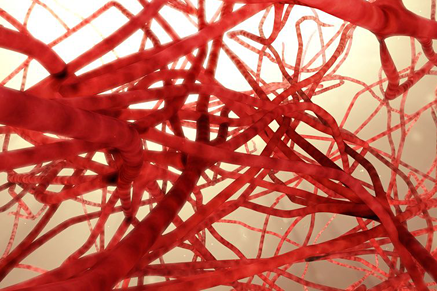Chronic regeneration of damaged endothelial cells at sites of disturbed blood flow in the vasculature promotes the development of atherosclerosis. Now an IPEK team has further elucidated the role of a short RNA molecule in atherogenesis.
Atherosclerosis – the condition popularly known as hardening of the arteries – develops almost exclusively at junctions and sharp turns in the arterial tree. This is because, at such sites, the endothelial cells that form the lining of the blood vessels are particularly sensitive to damage – and must be constantly repaired or replaced. A research team led by Andreas Schober and Lucia Natarelli has now provided further evidence that a specific micro-RNA, called miR-103, can stimulate the development of atherosclerosis. Their findings appear in the journal Nature Communications.
Reparaturen mit Folgen
Ständige Reparaturprozesse in den Abzweigungen des Gefäßsystems fördern Atherosklerose. IPEK Forscher zeigen, wie dabei kurze RNA-Moleküle zur Krankheitsentstehung beitragen.
Atherosklerose – umgangssprachlich als Gefäßverkalkung bezeichnet – entwickelt sich fast ausschließlich an Gefäßabzweigungen, da die dortigen Gefäßzellen vermehrt geschädigt werden – was ständige Reparaturprozesse nötig macht. Wissenschaftler um Andreas Schober und Lucia Natarelli haben nun nachgewiesen, dass dabei sogenannte mikro-RNAs, sehr kurze RNA-Abschnitte, Atherosklerose fördern können. Darüber berichten sie aktuell im Fachmagazin Nature Communications.

